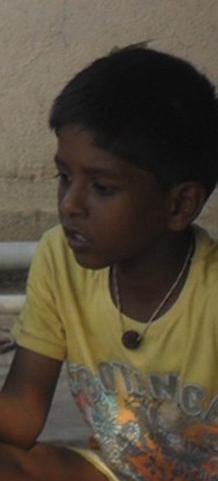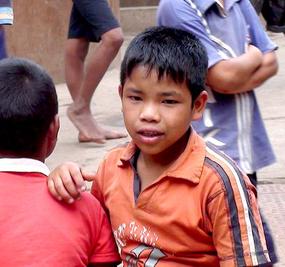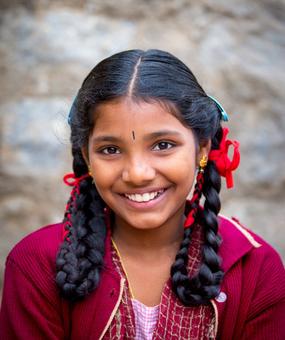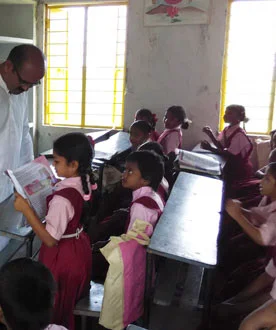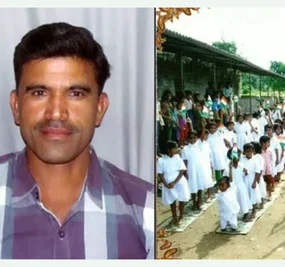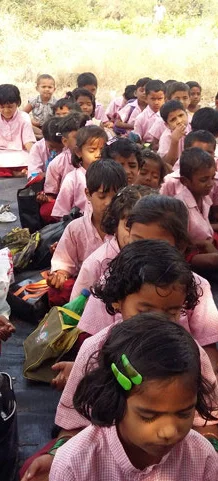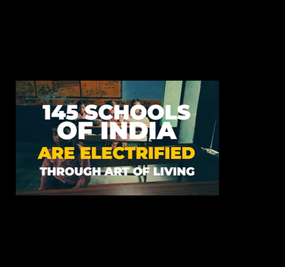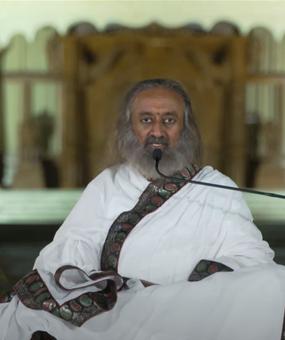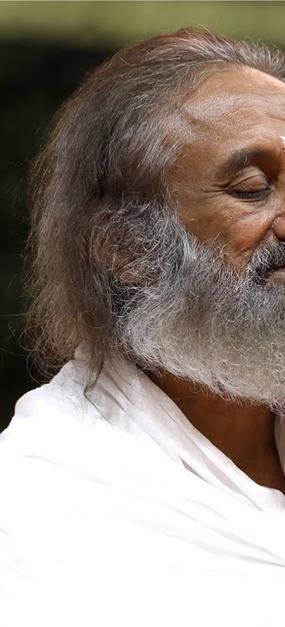Chandan lost both his parents at a very young age and had to drop out of school. Being the eldest, he had to shoulder the financial responsibility of his three younger sisters. Art of Living stepped in and took responsibility for not only educating the four siblings, but also of their housing and other living expenses. Today, Chandan has completed school and drives the school bus to earn a living. He aspires to become a teacher and a mentor in the same school that once supported him after completing higher education.
Most of tribal India is economically challenged. Stories of children like Chandan, and others never getting an opportunity to go to school because of child labour, child marriage, or bereavement are rife. From establishing the first free tribal school in 1999, Art of Living has come a long way. Every year, we provide free education to over 3000 first-generation learners who otherwise would not have received any formal education.
Inspiration from a spiritual visionary
Inspired by Gurudev Sri Sri Ravi Shankar’s vision of for free education, Brij Bhushan Chawla, an Art of Living volunteer, started a tribal school in Jharkhand in 1999. He shares, “Building a school is easy. But it is a lifelong commitment to help a tribal child become a self-assured adult who can not only make a living but also enjoy life and serve the community.”
From a single classroom in one village, our project has now reached 67,887 students in 20 states across India.
However, the initial years were hard. Recounts Brij Bhushan, “There were no roads, no electricity, and no proper water supply in the area. This hampered access for remote tribal natives. Our team had to toil to get the electricity lines and the roads built to reach these places.”
The challenge was compounded by the fact that locals did not send their kids to school because they were accustomed to leaving the older kids at home to watch the younger ones while they went to work. Art of Living circumvented this problem by organizing programs involving the whole community. Our programs like free medical clinics, tree-planting campaigns, workshops on organic farming, and training for parents in a vocational field helped establish relationships with the locals and inspired them to send their kids to our schools on a regular basis.
Providing free, holistic education
Our schools run free of charge and provide books, uniforms, school bags, bicycles, and transportation, along with daily lunch and milk to the students. The children learn languages, modern science, history, geography, ecology and other subjects taught in schools all over the nation. Alongside, they get a taste of yoga, meditation, and ancient chanting.
We ensured that each tribal school has its own garden which is maintained by the students themselves. We help them cultivate fruits and vegetables using zero budget natural farming techniques. We have integrated arts, crafts, and sports as an integral part of the student curriculum.
Despite using modern medium like computers to educate, we maintain the cultural heritage of the tribe by encouraging the children to perform dance-dramas in their traditional language and costumes.
The impact
Today, there is a marked difference in these tribal villages and the mindset of the students and their parents. Apart from increased literacy, there is a reduction in child labor, decrease in early girl child marriage in the villages and lesser incidents of early pregnancy and miscarriages.
Parents have started showing enthusiasm for sending their children to school. Mitra Agarwal, Project Coordinator in Arunachal Pradesh shares, “It is very encouraging to see parents who have never gone to school lining up to get their children educated. The response of the parents is so overwhelming that we have decided to start classes for the adults too.”
Some of the schools have an equal number of girls and boys, and the general attendance of students is close to 89 percent – a rare feat for schools operating in tribal zones. In fact, the number of applications for admission is on the rise each year.
Moreover, free medical camps held regularly by the Art of Living in these areas has led to better health and hygiene. Before the project started, malaria was rampant in the area, and child mortality rates were quite high. Today, the regular supply of medical help by the Art of Living volunteers has minimized the death toll, making this endeavor a success.
How does the journey look so far?
- 20 schools in remote tribal areas in Jharkhand, West Bengal, and Tripura
- Over 3000 students receive free education every year
- 10% dropout rates – much lower than the country average for similar schools
- Up to 89% school attendance rate
- Reduction child labor
- Reduction in incidents of child marriage, teenage pregnancy, and miscarriages
- Lower child mortality rates
- Better than the national average – 1 teacher for every 30 students
- 48 girls to 52 boys – much better than the national average
Long-term vision
On being asked what the students want to become when they grow up, their unanimous response is, “I want to become a doctor or a teacher and serve my own community.” Our volunteers actively explore further career opportunities for these students after they graduate from school. Keeping that in mind, we set up a vocational training center called Vigyan Ashram to allow the students to learn skills that can help them earn their livelihood. Our center imparts practical training in the field of agriculture, animal husbandry, mechanical workshop, electrical and masonry work, and use of natural energy resources.
We are looking for partnership opportunities to expand the infrastructure and to manage operational expenses in these schools.
We are looking for partnership opportunities to expand the infrastructure and to manage operational expenses in these schools.



